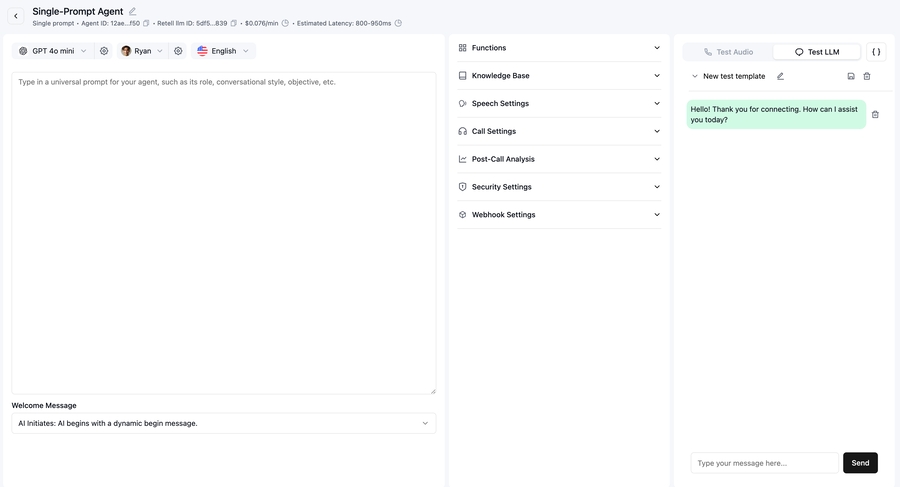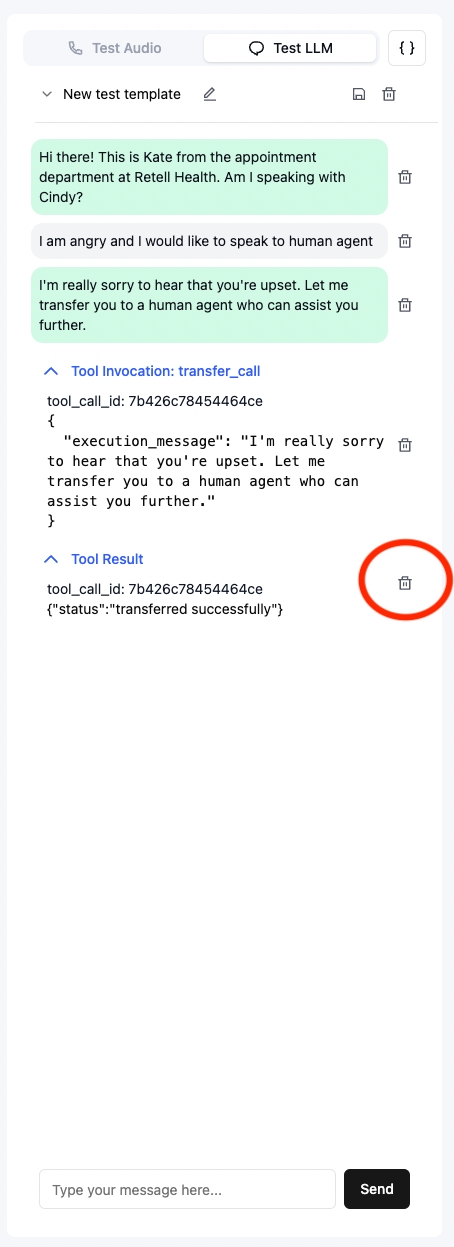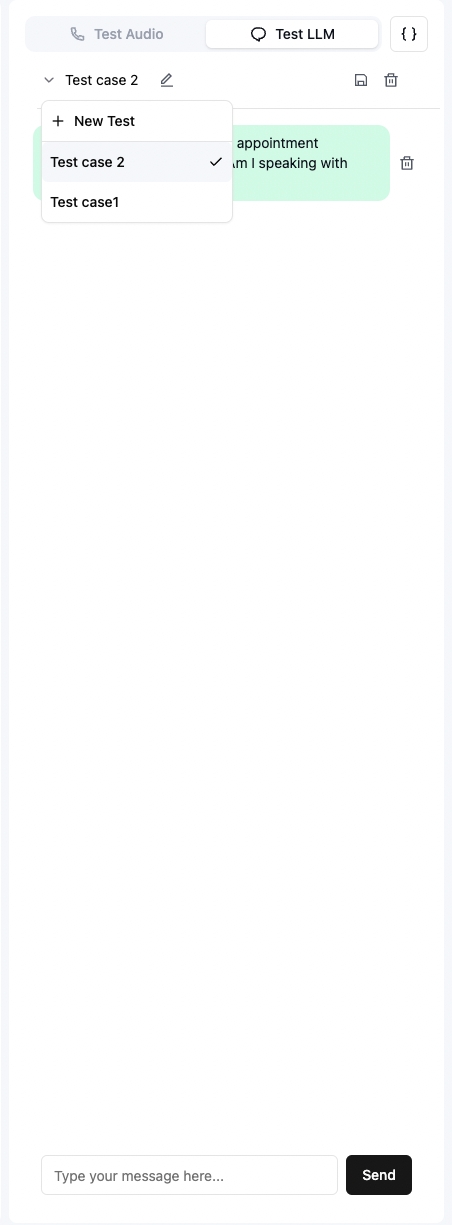LLM Playground
Learn how to effectively test and debug your AI agents using the LLM Playground
The LLM Playground provides a convenient environment for testing your AI agents without making actual web or phone calls. This interactive testing interface enables:
Rapid prototyping and debugging of agent responses
Testing different conversation scenarios
Immediate feedback on agent behavior
Faster development iterations
1
Access the LLM Playground
Navigate to your agent’s detail page
Click on the “Test LLM” tab
You’ll see the chat interface where you can start testing

LLM Playground Interface
2
Test Basic Conversations
Type your message in the input field
Observe the agent’s response
3
Test Function Calling
Use prompts that should trigger specific functions
Verify that functions are called with correct parameters
 4
4
Iterate and Refine
Monitor agent behavior and responses
Update prompts or functions as needed
Click the “delete” button to reset conversations
Test the updated behavior

Iterate and test
5
Save Test Cases
Click the “Save” button to store your test conversation
Add a descriptive name for the test case
Access saved tests from the agent detail page

Save test case

Saved test cases
6
Test Dynamic Variables
Use dynamic variables in your prompts
Verify that variables are properly interpolated
Test different variable values and scenarios

Best Practices
Start with simple conversations and gradually test more complex scenarios
Save important test cases for regression testing
Test edge cases and error handling
Document unexpected behaviors for future reference
Last updated